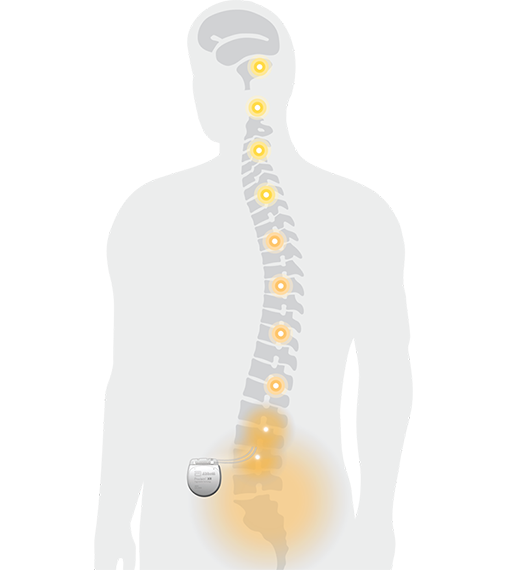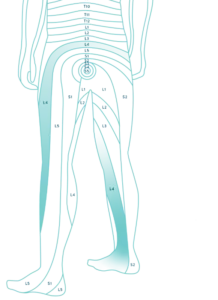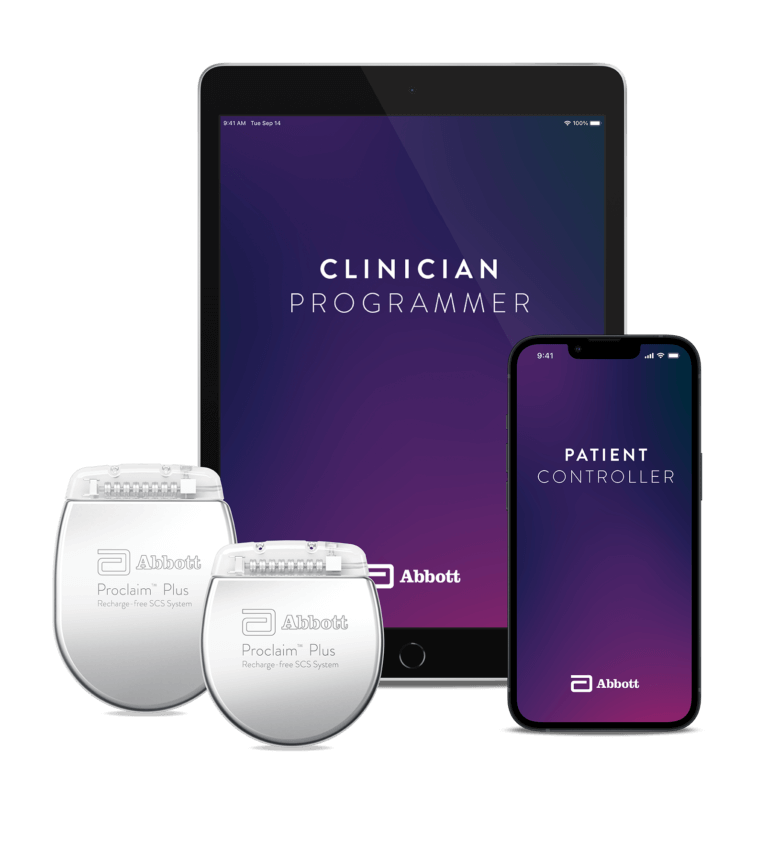
SPINAL CORD STIMULATION (SCS):
Spinal Cord Stimulation (SCS) represents one of the most advanced techniques in the field of Pain Management. SCS is used when nonsurgical and/or surgical options have failed to provide sufficient relief from pain. SCS requires two separate procedures, a “Trial” procedure, and a “Permanent Implant” procedure. For the “Trial” procedure, two thin electrodes are placed into the epidural space, close to the nerves transmitting pain signals. The “Trial” procedure is done in one of our clinics and takes 20-30 minutes to perform; when temporary electrodes have been placed, patients try out the effectiveness of the device from the comfort of their home for a period of 5-7 days. If patients find the device helpful and are satisfied with the result of the “Trial”, then a consultation with a neurosurgeon is arranged to discuss a “Permanent Implant” placement.
Spinal Cord Stimulation is an extremely effective way of managing chronic pain. When chronic pain is well managed, patients usually experience improvement in their overall quality of life and sleep. Many patients are also able to reduce the need for pain medications. Please, visit www.abbott.com/consumer/neuromodulation.html to learn more about this pain management technology.
Conditions Treated:
Spinal Cord Stimulation is commonly recommended for patients with the following conditions:
- Back pain that continues after surgery (failed back surgery syndrome)
- Peripheral neuropathy caused by diabetes or cancer treatment
- Chronic lower back and neck pain
- Chronic leg and arm pain
- Complex Regional Pain Syndrome (CRPS)
- Injuries to the spinal cord
- Pain after an amputation (phantom limb pain)
- Abdominal and pelvic pain


DORSAL ROOT GANGLION STIMULATION (DRG):
Dorsal Root Ganglion Stimulation (DRG), along with Spinal Cord Stimulation (SCS), also represents one of the most advanced techniques in the field of Pain Management. Most of the concepts applicable to the SCS are also true for the DRG. The major difference is that “Trial” and “Permanent Implant” leads are positioned along the individual nerves branching out from the spinal cord rather than the spinal cord itself. Lead positioning along individual nerves allows for very targeted pain relief. Please, visit www.abbott.com/consumer/neuromodulation.html to learn more about this pain management technology.
Conditions Treated:
Dorsal Root Ganglion Stimulation is commonly recommended for patients with the following conditions:
- Knee pain after injury or surgery
- Foot pain after injury or surgery
- Hip pain after injury or surgery
- Groin pain after injury or surgery
- Lower back and leg pain

What to Expect:
Spinal Cord Stimulation and Dorsal Root Ganglion Stimulation: “Trial” procedure length 20-30min. Patients start experiencing significant pain relief almost immediately following the procedure. Please note that if IV sedation is requested, the patient would need to bring a driver with them on the day of the procedure. Please call us at (912) 910-3777 or send us a web inquiry if you have additional questions about this procedure and how it can benefit you.



